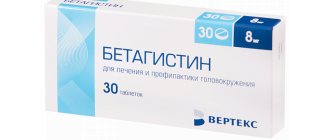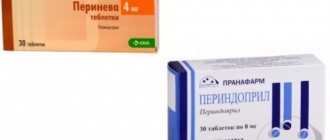Absolute analogues - ophthalmic drops "Tobrex" and "Tobrex 2x" have strong antibacterial properties and are prescribed to cure infectious and inflammatory pathologies of the visual organ. Both medications quickly relieve acute effects and therefore do not require long-term use. But what are the differences between them, the instructions will help you understand, providing complete information about the drugs. You need to familiarize yourself with it before using Tobrex 2x or Tobrex to treat eye diseases.
Pharmacological properties
Tobramycin is an aminoglycoside antibiotic that affects both gram-positive and gram-negative microorganisms.
has a bactericidal effect due to inhibition of the complex of polypeptides and synthesis in bacterial ribosomes. The action of tobramycin has been described in vitro by determining the minimum inhibitory concentration (MIC), which measures the activity of the antibiotic against each bacterial species. Because tobramycin has a very low MIC relative to most ocular pathogens, it is considered a broad-spectrum antibiotic. Critical MUC values have been established that determine the sensitivity or resistance of a bacterial culture to a particular antibiotic. The current critical MIC value for tobramycin relative to individual bacterial species takes into account the sensitivity of the species, as well as the maximum concentration and pharmacokinetic value of the concentration-time relationship measured in serum after oral administration. The determination of these critical values, dividing microorganisms into sensitive and resistant, has been used in determining the clinical effectiveness of antibiotics that are used systemically. However, when a high concentration of antibiotic is applied locally directly at the site of infection, determining critical values is no longer relevant. Most microorganisms that would be classified as persistent by defining critical values for systemic use actually respond well to topical treatment.
In clinical studies, topical tobramycin solution was effective against many strains of existing ocular pathogens in patients participating in the studies. Some of these ocular pathogens are believed to be persistent based on the determination of critical values for systemic use. In clinical studies, tobramycin has been demonstrated to be effective against the following pathogens in superficial ocular infections:
– gram-positive bacteria: Staphylococcus aureus (methicillin-sensitive or resistant*); Staphylococcus epidermidis (methicillin sensitive or resistant*); other coagulase-negative Staphylococcus species; Streptococcus pneumoniae (benzylpenicillin sensitive or resistant*); other Streptococcus species.
*The β-lactam (i.e., methicillin, benzylpenicillin) resistance phenotype is not associated with the aminoglycoside resistance phenotype, and both are not associated with virulence and pathogen phenotypes. It has been revealed that most staphylococci resistant to methicillin are resistant to tobramycin (and other aminoglycoside antibiotics). However, these persistent staphylococcal cultures (as determined by critical MUC values) usually respond well to treatment with topical tobramycin.
– gram-negative bacteria: Acinetobacter spp., Citrobacter spp., Enterobacter spp., Escherichia coli, Haemophilus influenzae, Klebsiella pneumoniae, Moraxella spp., Proteus mirabilis, Pseudomonas aeruginosa, Serratia marcescens.
Systemic absorption of tobramycin when administered topically is very low.
Overdose
If you overdose on eye drops, rinse your eyes immediately with warm water. If the contents of a bottle or bottle of eye drops have been drunk or part of the medicine has been swallowed, you should immediately consult a doctor, even if there are no signs of discomfort or poisoning.
If, a few days after starting to use TOBREXEye Drops, the symptoms of the disease have not improved or the situation has worsened, you should consult a doctor. When you start taking a new medicine, you should tell your doctor about using Tobrex. Also, the use of the drug must be reported every time you visit a dentist, ophthalmologist or any other doctor.
If Tobrex eye drops were used outside of the prescription, you should inform your doctor about this. Otherwise, the doctor may think that the treatment was not effective and use unnecessary measures to combat the infection.
If the patient becomes pregnant while using the drug, she should tell her doctor about it.
Forbidden:
- allow children free access to Tobrex;
- use eye drops without a doctor's prescription;
- give medicine to someone, even if the symptoms of the disease are the same;
- stop taking the drug, reduce the dosage or frequency of use without your doctor’s permission, even if the symptoms of the disease have improved.
If the patient does not take the full course as prescribed by the doctor, not all of the bacteria that caused your infection may be killed. These bacteria may continue to grow and multiply. Thus, the infection may not be completely cured or may return.
Tobrex should be used with caution while driving or operating machinery because the drug may affect the person and their vision. As with any eye medication, temporary blurred vision or other vision disturbances may affect the ability to drive or use machinery. If blurred vision occurs during instillation, you should wait until it clears before traveling or using the equipment.
Application
Instill Tobrex2x 1 drop into the conjunctival sac(s) of the affected eye(s) 2 times a day (morning and evening) for 7±1 days. for acute diseases, instill 4 times on the first day, then 1 drop in each eye 2 times a day until the end of the treatment period, which is 7±1 days.
There is no need for dose adjustment in elderly patients.
Tobrex2x can be used in children over 1 year of age in the same doses as in adults. However, information regarding the use of the drug in pediatrics is limited.
Use for liver and kidney dysfunctions. Systemic absorption of tobramycin when administered topically is very low. When concomitant therapy with systemic use of aminoglycoside antibiotics is necessary, serum concentrations must be monitored to maintain the required therapeutic effect.
Comparative characteristics
Composition of drugs
The pharmaceutical products Tobrex and Tobrex 2X contain an antibiotic from the aminoglycoside group, tobramycin, as the main component. Other substances that perform an auxiliary function are also included in the composition, including:
- sodium sulfate;
- tilaxopol;
- monobasic Lewis acid;
- caustic soda.
Both medications are available in the form of drops, but they differ in consistency. Tobrex 2x has a thicker structure, somewhat similar to office glue, and therefore it stays in the conjunctival sac longer and does not require frequent instillations. Since the composition of antibacterial medications is identical, the rest of the difference between them will be insignificant.
The decision on the advisability of using Tobrex or Tobrex 2x should be made exclusively by a specialized physician - an ophthalmologist, especially if the treatment is to be carried out in young children.
When are they prescribed and to whom are they contraindicated?
The medication is used in the treatment of lesions of the choroid of the anterior part of the eyeball.
Eye drops are prescribed to children and adults for the treatment of the following pathologies of the visual organ:
- blepharitis;
- acute inflammation with pus of the hair follicle of the eyelash or sebaceous gland;
- iridocyclitis;
- inflammation with suppuration of the inner membranes of the eyeball;
- inflammatory lesion of the meibomian glands;
- purulent and catarrhal conjunctivitis;
- obstruction of the nasolacrimal duct.
The active substance in the ophthalmic drug acts on gram+ and gram-pathogenic agents, as well as escherichiosis, staphylococcal and streptococcal flora. The safety of Tobrex allows it to be used even by newborns, since its structure and low concentration of the main ingredient are rather poorly absorbed in the blood. But this does not apply to Tobrex 2x, which has a more viscous consistency, which is not suitable for the treatment of ophthalmic pathologies in children under 1 year of age. Both medical products are contraindicated for patients who have a personal intolerance to any component of the composition, as well as in the presence of allergic conjunctivitis and other manifestations of allergies. In addition, Tobrex 2X is also contraindicated in children under 12 months of age.
Recommendations for use
The drug can be used for newborns, but the intensity and course of treatment is prescribed by a specialist.
For adults who have experienced inflammatory eye diseases, Tobrex is usually prescribed 1 drop up to 5 rubles/24 hours. The duration of the therapeutic course should not exceed 7 days. For newborns, the doctor selects the dosage of the antimicrobial agent personally, based on the diagnosis and severity of the baby’s condition. Before using eye drops, it is recommended that young children be sure to check their body’s reaction to this medical product. The instructions for Tobrex 2X are different, and due to the viscous consistency of the drops, which allows the solution to linger in the eye for a long time, they can be instilled 1 drop at a time. in the morning and evening for 7 days. Patients with acute severe infectious lesions of the visual organ are allowed to carry out up to 4 instillations on the first day, and then, as usual, 1 drop. in the morning and evening. Each time before instilling the pharmaceutical drug, you need to shake the bottle.
Negative reactions
Despite the undoubted effectiveness of the antibacterial drugs Tobrex and Tobrex 2X, they, like all antibiotics, can cause adverse events, especially if they are used in excess of the recommended dosages. So, among the possible negative effects may be:
- convulsions;
- temporary deterioration of visual function;
- redness of the connective membrane, itching and discomfort;
- disruption of the kidney organ;
- recurrence of infections.
In case of overdose of the drug and sensation of side effects, it is necessary to rinse the organs of vision with water.
If the dosage of drops has been significantly exceeded, the victim may experience pain, burning and discomfort. In this case, you will need to immediately rinse your eyes with running water and close your eyelids and sit for 2-4 minutes. Subsequent instillation should be carried out only after the complete disappearance of discomfort.
Side effects
There were no reports of serious ophthalmic or systemic side effects associated with the use of Tobrex2x in clinical studies. The most common side effects associated with the use of the drug were symptoms of an ocular allergic reaction, which included itching, eye congestion and lacrimation. each of these reactions occurred in 1.5% of patients.
During clinical trials of Tobrex2x, the following side effects were reported and were assessed as certainly, probably, or possibly related to treatment. Their occurrence was either frequent (1.5%) or insignificant (0.7%).
On the part of the organ of vision: frequent - itching, ocular hyperemia, lacrimation. Single - ocular allergic reactions, discharge from the eye, discomfort in the eyes, conjunctival edema; swelling, erythema and dysfunction of the eyelids.
Systemic effects: There were no reports of systemic side effects associated with the use of Tobrex 2x eye drops in clinical studies.
Is there a difference?
To determine which drug is better, you need to understand the differences between them. Having studied the composition, it is clear that the components present in Tobrex and Tobrex 2x are absolutely similar, therefore, both medications have the same effect on the eyes. The difference lies in the consistency and with Tobrex 2X it is thicker, which means it has a higher percentage of absorption. Therefore, the second medicine is more suitable for the treatment of severe eye pathologies and is not at all intended for the treatment of ophthalmic diseases in newborns.
special instructions
Intended for local ophthalmic use. There is no data regarding the use of the drug in children under 1 year of age. Some patients may develop sensitivity to aminoglycosides when applied topically. If serious adverse reactions or hypersensitivity reactions occur, discontinue use of the drug.
As with other antibiotics, prolonged use of tobramycin may result in overgrowth of nonsusceptible microorganisms, including fungi. If superinfection occurs, appropriate therapy should be prescribed.
To prevent contamination of the tip of the dropper and the solution, you must be careful not to touch the eyelids, nearby areas or other surfaces with the tip of the dropper bottle. Keep the bottle tightly closed after use.
There is no experience with the use of Tobrex2x in contact lens wearers. Because the preservative benzododecinium bromide can be absorbed by soft contact lenses, it is not recommended to use Tobrex2x while wearing them. You must wait 10–15 minutes after instillation of Tobrex2x before inserting contact lenses.
As with other eye drops, temporary blurred vision or other vision disturbances may affect the ability to drive or operate hazardous machinery. If blurred vision occurs during instillation, the patient must wait until vision clears before proceeding with these types of work.
Clinical experience with the use of tobramycin during pregnancy is limited. Systemic treatment with aminoglycosides negatively affects the auditory nerve and leads to deafness. Since systemic absorption is low when Tobrex2x is applied topically, the risk is considered negligible, but when using the drug during pregnancy, the above should be taken into account.
During systemic treatment, tobramycin passes into breast milk in amounts that pose a risk of adverse effects on the baby. When Tobrex2x is applied topically, systemic absorption is low, so the risk is considered negligible, but should be taken into account when prescribing this drug to women who are breastfeeding.
Contraindications
Before using Tobrex eye drops, you need to make sure that there are no relevant contraindications. These include:
- allergy to tobramycin or other aminoglycosides;
- allergic reactions to antibiotics or any of the components of Torbex eye drops;
- any other similar medicines.
Some of the symptoms of an allergy - the reaction may include shortness of breath, wheezing or difficulty breathing; swelling of the face, lips, tongue, or other parts of the body; rash, itching or hives on the skin.
You should not use Torbex eye drops if:
- the security seal around the cap or the neck area of the bottle is broken;
- the bottle/packaging shows signs of tampering;
- The medicine's expiration date stated on the package or bottle has expired.
The use of a drug that has expired is strictly prohibited.
Do not use Tobrex eye drops while wearing contact lenses. Residues of the preservative, benzalkonium chloride, may be contained in soft contact lenses. The use of contact lenses is allowed 15 minutes after eye drops.
The drug should not be used to treat the eyes of newborns and children under 12 months of age.
You should not take Tobres while wearing contact lenses.
Before starting treatment with the drug, you should consult with an ophthalmologist. The medical history must indicate the presence of allergies to any other medications or substances such as food, preservatives or dyes, and whether there are medical conditions that prevent the use of Tobrex drops.
It is necessary to discuss the possibility of using the drug if the patient is pregnant or planning a pregnancy during the course of treatment, during breastfeeding.
Note!
Description of the drug Tobrex 2X drops. eye. 3mg/ml vial. 5ml on this page is a simplified author’s version of the apteka911 website, created on the basis of the instructions for use.
Before purchasing or using the drug, you should consult your doctor and read the manufacturer's original instructions (attached to each package of the drug). Information about the drug is provided for informational purposes only and should not be used as a guide to self-medication. Only a doctor can decide to prescribe the drug, as well as determine the dose and methods of its use.
Indications for use
When treating with eye drops, priority in the area of application of Tobrex belongs to the attending physician or ophthalmologist. In case of switching to the use of other eye drops or replacing them with Tobrex, the doctor must provide advice on the procedure for completing the course of previous treatment and switching to a new drug.
In general, the dosage for adults will depend on the type and severity of the infection being treated. If the eye has a very severe infection, the doctor may recommend applying 2 drops to the affected eye(s) every hour; For mild to moderate infections, the dose is usually reduced to 1-2 drops in the affected eye(s) every four hours.







